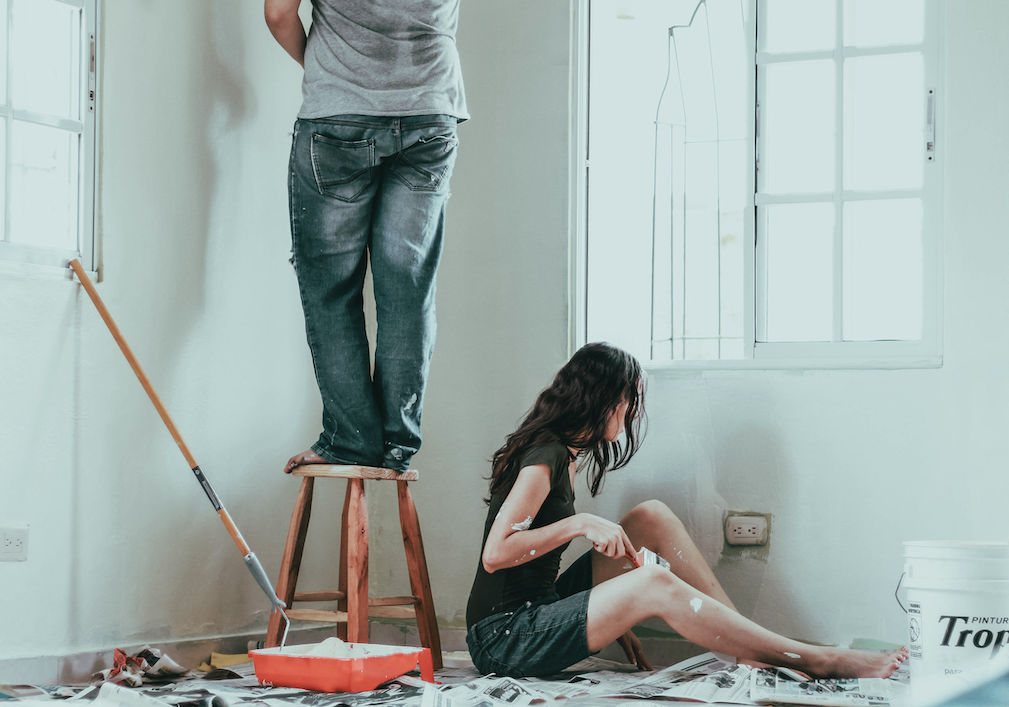The DIY Lifestyle

Growing up, I was the kid that had to set aside every Sunday to help my dad with anything and everything that had to be done around our house. Chopping wood, hauling wood, mowing, building, painting, building fences, fixing equipment and cutting moss (yes, those were the days that Lake Austin had so much milfoil, aka, duckweed, that you had to “mow” it down regularly). To this day, my dad is still the “king” of DIY. He is legally blind, not able to see anything that he needs to; and selectively deaf, hearing only what I don’t want him to. Yet, on any given day he can be found somewhere on the property “doing it himself.” Dad’s DIY list makes most of our neighbors’ pale in comparison, as at age 92, he’s still chainsawing wood, although the pieces are less in diameter now; painting large projects, mostly outside the lines; hanging plywood, some at a slight angle; and mowing grass, with accidental lanes of tall grass between each trail of cut grass.
I watch Dad work his way through his never-ending DIY list at his age and realize the importance each line item plays in his mental and emotional health. Granted, many of us love the satisfaction of checking items off a good to-do list, but embracing a DIY mindset can go beyond a glorified checkmark. Science validates that some tasks and hobbies contribute to, not only physical fitness but mental fitness, too. In my Dad’s case, there’s something to be said that out of his entire 92+ years, he’s never had a gym membership, a personal trainer, nutritionist, lawn service crew, tree trimmer or handyman. Comparatively, he’s studied manuals, sat and processed, and figured out how to do so many tasks himself (that’s now called “The University of YouTube.”) He’s done it all himself.
As a fitness trainer and nutrition coach, I have “prescribed” clients with DIY activities to help them get out of their rut. I’ve suggested they do their own lawn for a while (with a push mower of course), rake their own leaves, or instead of hiring someone to do all the pruning, do it themselves. It’s strategic and intentional, instead of writing gym workouts, we’ve simply moved our activity to DIY items that have required movement and activity around the house.
“I racked up over 6,000 steps just mowing our lawn! Can I tell you how boring 6,000 steps is for me on the tread?”
“My arms were so sore after using those pruners! I couldn’t go to the gym if I wanted to.”
“Being outdoors all day working in the yard cleared my mind as nothing has in years – and I had an appetite like I haven’t had in decades, too!”
Benefits Of DIY-ing
1. Stress Release
DIY activities require our attention. And when we focus on tasks at hand, research from the National Institutes of Health shows it can reduce anxiety and negative moods by helping us feel productive and creative. Many DIY projects can decrease anxiety and stress levels by allowing the mind to relax and let go. Simultaneously, while we are focusing on the task, we are also moving toward a sense of accomplishment, which then can lead to an uptick of our “happy hormones,” dopamine, serotonin and endorphins.
2. Out of Your Rut
Our brains are wired with patterns and routines. Consequently, what we typically do ourselves and what we have others do for us can create a “rut” (we heard a lot of this in 2020). Same activities, same people, same schedule day in and day out. Some of us are still in it, some have slipped back to the “rut” we may have been in prior to quarantine, going through daily life experiences, but not truly experiencing life. It is up to us to provide our own best interventions when we feel that we are on the “gerbil wheel” of life. Break the cycle and step out of the rut by doing some of your home projects yourself.
3. Increased Confidence
Let’s face it, there’s so much to know in this day and age that it’s easy for our confidence to crack. However, those same social sources that can sometimes make us feel inadequate can also be our best ally and resource in stepping out of the rut and tackling some of our own DIYs. Not only is starting and completing a task a big confidence booster, but the end result of “I did that” can be long-lasting in building self-esteem. The National Alliance on Mental Illness credits self-esteem as the first step in reclaiming emotional and physical confidence. And once that step is made, research shows relationships improve, and addiction, depression and anxiety can decrease.
4. Cognitive Health
We are only beginning the conversations and studies surrounding brain fitness and nutrition. The more natural approaches we can take to both of these, the better, and DIYs fall right into this category. Stimulating our brain, figuring things out, getting creative, learning a new hobby – it’s all good for our brain plasticity. Scientists have found that brainy activities stimulate new connections between nerve cells and may even help the brain generate new cells, developing neurological “plasticity” and building up a functional reserve that helps work against future cell loss. DIY projects can go right on the same list for cognitive stimulation as creative arts and learning new skills and hobbies.
Neale Donald Walsch was onto something when he scripted the famous quote that “life begins at the end of your comfort zone.” A new excitement, a new pursuit and a renewed vitality for what we do and how we do it. And it all can begin with a little DIY.






